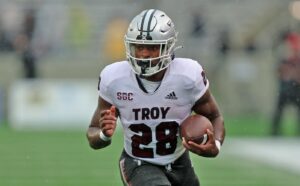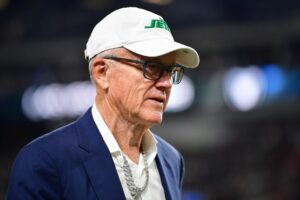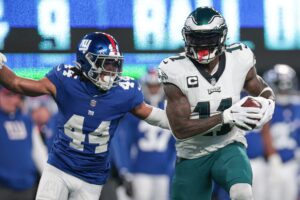The NFL Draft has evolved significantly since its inception in 1936 with Jay Berwanger going from U-Chicago to Philadelphia. Since the NFL Combine originated in 1982, teams were able to get a better look at prospects they consider NFL-ready. There are many factors that go into the NFL Draft besides the publicity and the media attention. Not because of television exposure, but rather a future job. General managers face the risk of losing their job or receiving a bonus. The draft is where teams make or break their future. It has been 84 years since it all began, but have teams gotten better at selecting prospects? Is there a secret or is it based on pure luck and strategy?
How NFL Draft Scouting Has Changed
In 1989, NFL Draft scout Mike McCoy of the Dallas Cowboys created a PVC (point-value chart). It assigns a number value to each selection spot based on the perceived value that player would have to their new team. Teams utilize this chart most when negotiating trades to ensure each party is receiving equal benefits. Despite its popularity and continued usage through the years, researchers have found this metric to be inaccurate in determining a player’s future success in the league. Instead, they rely on the tape and data from the combine when making a decision.
Prospective players additionally take a Wonderlic Aptitude Test, designed to gauge intelligence. Success on the test does not translate to success on the field. Just ask journeyman quarterback Ryan Fitzpatrick. Rare exceptions included Andrew Luck. NFL Draft researcher Andrew Gill states that “physical and psychological player assessments from the Combine are more important than collegiate on-field performance in determining relative selection position on draft day”. That includes testing. Coaches are more concerned with figuring out the quarterback position because an investment made in a QB can produce various results.
The 1998 NFL Draft between Peyton Manning and Ryan Leaf is the go-to case that general managers look at when choosing a quarterback. Manning came into the draft with no questions while Leaf was seen as an enigma. The Colts took Manning while the Chargers traded up to draft Leaf. Manning’s career flourished as he became one of the greatest in NFL history. Leaf, on the other hand, ranks as one of the biggest busts in history.
If the draft process is so good, how was it that Tom Brady fell to the 6th round and the Packers passed on three Hall of Famers for a big bust in Tony Mandarich? Also, why did the Raiders draft JaMarcus Russell? In addition, how are teams such as the 2013 Seahawks, the 90’s Cowboys, 70’s Steelers, 80’s 49ers, 60’s Packers, 21st-century Patriots able to draft good players outside of the 1st round and in later rounds? The answer is simple. Quality people in the front office and people in the right position making the correct calls which eventually led to victory.
Data has shown that teams have gotten better as a whole. This year, the process will repeat. Some teams will continue to make the right moves, some will change and become good, some will go from good to bad and others will just stay bad. What is your team like? Are they ready to make the right move? Only time will tell. Your team is now on the clock.
Main photo:
Embed from Getty Images






